When you're a new writer, you tend to compare your first draft with someone else's polished finished book.
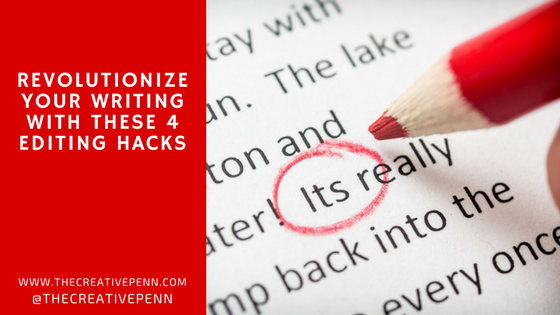 But you can't compare the two because the difference is in the editing.
But you can't compare the two because the difference is in the editing.
Here are some tips that you could use when editing your next book from Jess Lourey and Shannon Baker.
You’ve spent months writing that book. Your work included deep research on setting, juggling Scrivener, notecards, and airplane glue to get that plot just right, and diving so deep into the head of your character that you were dreaming her dreams. But now you’re done. Those 90,000+ glorious words are laid out, one after the other, a beautiful first draft.
Time to get an agent or self-publish, right?
Nope. Now it’s time to edit.
Personally, I love editing. It’s like I’ve lugged all the wood, cement, and nails needed to construct this house, and now I get to decorate it.
Other writers hate the editing process, though. They just want to be done with the book already. Whatever camp you’re in, you can make the editing process (even) better by adopting these four editing hacks that Shannon Baker, author of the latest in the Kate Fox mystery series, Dark Signal, and me, author of the recently-released humorous mystery March of Crime, swear by.
Editing Hack #1, from Shannon:
I’m visual, so when I finish my draft, I synopsize each chapter in Scrivener’s corkboard, print it out, and tack it to a real corkboard. Then I tag the ¼ , ½, ¾ places so I can make sure I’ve hit turning points and twists to keep the pace flowing. I can color code point of view and track subplots.
From there, it’s a matter of making revision ideas with sticky notes, and starting in on the rewrites.
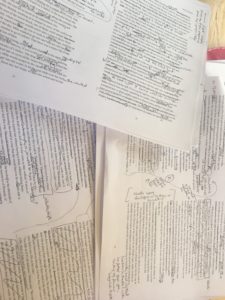
Editing Hack #2, from Jess:
Read your book out loud. I know you’ve heard this hack, and you’ve discarded it because it’s dumb, right? Your eyes can see your book just fine so why would you bother reading it loud, which is dorky and uncomfortable. This is why:
“I cnduo't bvleiee taht I culod aulaclty uesdtannrd waht I was rdnaieg. Unisg the icndeblire pweor of the hmuan mnid, aocdcrnig to rseecrah at Cmabrigde Uinervtisy, it dseno't mttaer in waht oderr the lterets in a wrod are, the olny irpoamtnt tihng is taht the frsit and lsat ltteer be in the rhgit pclae.”
You see what your eyes did? They made sense where there was none.
Your ears will not let you down that way. They are parabolic workhorses that will tell you when your flourishes are overdone, your rhythm is too consistent, your grammar not quite right. Read out loud. You gotta.
(Shannon here: Thank you for explaining that to me! I know you’re supposed to read it out loud, and I do, but now I won’t feel so silly about it.)

Editing Hack #3, from Shannon:
We all have crutch words. Common little parasites can include “just,” “that,” “how,” and “with.” My characters smile, nod, half-smile, and turn entirely too much. My latest book contained these culprits: clenched, disgust, dark, dark clouds, place, put, but, get, sat [houses and cars don’t sit], have, look, stride, strode.
Search and destroy.
Or, if you are typing in Word, find and replace.
I always do a search for “I saw” (thought, looked, etc.) if I’m writing first person. “She saw” (etc.) if writing third person. Generally, your point of view will be closer (therefore making your readers feel more infused in the action) if you eliminate those phrases.
Editing Hack #4, from Jess:
This editing hack, which I call the ARISE Method, was a game-changer for me. I developed it when writing Salem’s Cipher, my feminist thriller, in the fall of 2015. The book is intricately-plotted with four character POVs, multiple subplots, and 8 different settings. I needed a way to keep all that in play, and so I developed ARISE editing. The foundation of this method is that every scene in your novel must serve at least one purpose. It must offer the reader:
- Action
- Romance or Humor
- Information
- Suspense or
- Emotion
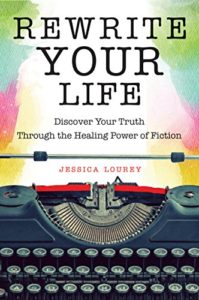 I go into more detail about the method in my book Rewrite Your Life: Discover Your Truth Through the Healing Power of Fiction, but here it is in a nutshell.
I go into more detail about the method in my book Rewrite Your Life: Discover Your Truth Through the Healing Power of Fiction, but here it is in a nutshell.
- Summarize each scene of your novel in three or fewer sentences.
- Write those summaries on a notecard, one card per scene. If you have multiple POVs in your novel, dedicate a specific color of notecard to specific POV. So, for example, all scenes from Chuck’s POV will be green, and all scenes from Clara’s POV will be yellow.
- Review the notecards, and put as many of the ARISE letters as fit into the upper right corner of each notecard. If the scene has romance, pencil in an R. If it also has emotion, pencil in an E, and so on.
- If a scene has no letters, chuck it, no questions asked. If it only has one letter, consider what you can add to it to give it at least two. Pencil in a note to yourself on that card. If it’s got at least three letters, it’s golden.
Revise your manuscript based on what you’ve discovered in the notecards, and bizango! You have a neat, sweet, guaranteed page-turner on your hands.
(Shannon here: I’m SO going to use this on the book I just finished! Thanks for this.)
Do you have any favorite editing tips? Please share them below and join the conversation.
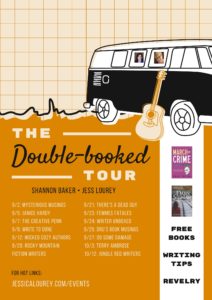 Please join Shannon and Jessie as they continue their blog tour. They will each be giving away three books this tour, and every comment you leave at a blog stop gets you one chance to win.
Please join Shannon and Jessie as they continue their blog tour. They will each be giving away three books this tour, and every comment you leave at a blog stop gets you one chance to win.
 Jess Lourey (rhymes with “dowry”) is best known for her critically-acclaimed Murder-by-Month mysteries, which have earned multiple starred reviews from Library Journal and Booklist, the latter calling her writing “a splendid mix of humor and suspense.” She is a tenured professor of creative writing and sociology, a regular Psychology Today blogger, a sought-after workshop leader and keynote speaker who delivered the 2016 “Rewrite Your Life” TEDx Talk, and the author of Rewrite Your Life, the only book out there which shows you how to turn your facts into healing, page-turning fiction. You can find out more at jessicalourey.com.
Jess Lourey (rhymes with “dowry”) is best known for her critically-acclaimed Murder-by-Month mysteries, which have earned multiple starred reviews from Library Journal and Booklist, the latter calling her writing “a splendid mix of humor and suspense.” She is a tenured professor of creative writing and sociology, a regular Psychology Today blogger, a sought-after workshop leader and keynote speaker who delivered the 2016 “Rewrite Your Life” TEDx Talk, and the author of Rewrite Your Life, the only book out there which shows you how to turn your facts into healing, page-turning fiction. You can find out more at jessicalourey.com.
 Shannon Baker is the author of the Kate Fox mystery series (Tor/Forge). Set in the isolated cattle country of the Nebraska Sandhills, Kirkus says, “Baker serves up a ballsy heroine, a colorful backdrop, and a surprising ending.” She also writes the Nora Abbott mystery series (Midnight Ink), featuring Hopi Indian mysticism and environmental issues. Shannon makes her home in Tucson where she enjoys cocktails by the pool, breathtaking sunsets, a crazy Weimeraner, and killing people (in the pages of her books). She was voted Rocky Mountain Fiction Writer’s 2014 Writer of the Year. Visit Shannon at Shannon-Baker.com
Shannon Baker is the author of the Kate Fox mystery series (Tor/Forge). Set in the isolated cattle country of the Nebraska Sandhills, Kirkus says, “Baker serves up a ballsy heroine, a colorful backdrop, and a surprising ending.” She also writes the Nora Abbott mystery series (Midnight Ink), featuring Hopi Indian mysticism and environmental issues. Shannon makes her home in Tucson where she enjoys cocktails by the pool, breathtaking sunsets, a crazy Weimeraner, and killing people (in the pages of her books). She was voted Rocky Mountain Fiction Writer’s 2014 Writer of the Year. Visit Shannon at Shannon-Baker.com
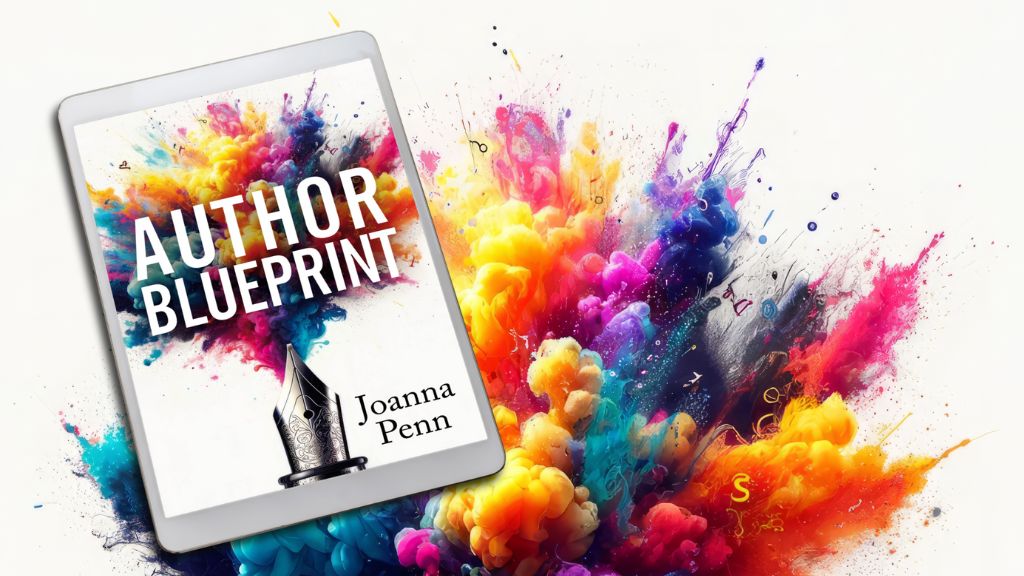
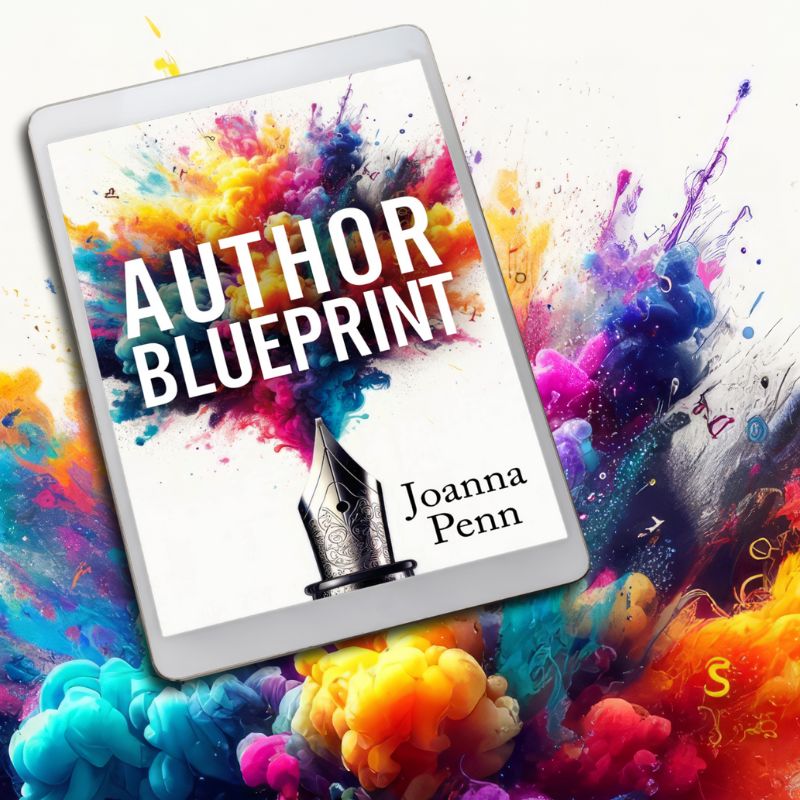
Thank you for hosting us, Joanna! Your blog is such a fantastic, amazing resource for writers.
Good morning Creative People! I’m on the road today (or wing and rail). I’m sure Jess will make you feel at home.
Great editing tips. Some I’ve heard before (like reading aloud), but several are new to me (love ARISE!). One thing I always do when editing is read the book in a different format. I notice different things when reading on the computer screen versus reading on paper or an ereader.
Ahhh, great tip! Thank you for sharing, Marla. Whatever you’re doing WORKS.
Lawsy this all sounds like hard work. And here I thought you just sat in your garret and let the muse flow. Good luck to you both. Xox
🙂 Thanks, Ann! No where is my pool boy to bring me my words and my wine? It’s time to write.
Great post and completely agree with the read out aloud method – it works for me. Another idea that works well but is not always practical is time distance. The longer the time you can leave a piece of work between when you write it and when you edit it the better. Have you ever written something and tried to edit it but not noticed a glaring error and then you look at it a few weeks later and see the error. This is because when you write something it is fresh in your mind and what you are seeing is not what is written down but what your mind thinks you have written down. I think it is the same reason that reading out aloud works better than reading silently. An interesting exercise is to dig out something you wrote a long time ago, perhaps before you took writing seriously. You might see something and wonder how you didn’t see it when you originally wrote it. Part of this might be that you have improved your writing ability but part will be that distance increases your ability to be objective.
Excellent point, Christopher, both about distance being a great editor and also about distance not always being possible. Because of another project I’m on deadline for, I have to push back editing a spec project for four months. It’s the first time I’ll have that much distance between writing and editing. I’m curious how much of a difference it will make, and in what ways. Thank you for stopping by and for commenting!
Absolutely!
Some of my old stuff is positively cringe-worthy! No idea how I could ever have thought it acceptable.
A tip I’ve learned is that every scene must have at least 3 purposes.
For instance, if a scene includes only information that’s necessary for the plot, it’s not enough.
If, to further the example, the scene:
1) includes that information;
2) develops (or deepens) a character; and
3) leads to a decision or action that drives the plot forward;
…you’ve got a solid scene.
Thanks for stopping by, L.L.! I endorse that tip; it’s similar to what I do with my ARISE method. Write on!
Timely post…I’m editing. Thanks. Another tip I discovered is that proofreading on my iPad somehow makes the typos, spacing errors, and sneaky little word omissions jump out in the small up-close format. I write in Scrivener on my big Mac but also have the iOS version on my iPad, which is very handy for minor work.
Interesting, Cristine! I don’t write with an iPad, but I bet changing medium does make a big difference.
I’ve been messing about with The Novel Factory for story planning. It automates this process and generates scenes (in the head, incident and tail labels). But I like arise.
It is supposed to synch with scrivener, but I haven’t tried that yet.
The theory was, that if I got it planned out first, then I could see if it would actually work before I wasted time writing a first draft and ending up written into a corner.
It can also keep track of plot points and objects if you mark them in different colour tags. Still working that bit out, too.
okay… the export to scrivener did not go well.
Oh noooo! I have Scrivener, and have professional writer friends who swear by it, but I am too much of a Luddite to use it…consistently. Sending healing thoughts to your export.
Such excellent advice! I have been telling authors for years they need to read their book aloud! That one thing has helped me over many rough spots.
The notecard idea is pretty cool. Having something physical that you can move and manipulate would change the way you’re viewing your story.
Right? It makes it very visual, and kinesthetic. It works for me. Thanks for stopping by and commenting, Maggie!
Love the advice, especially the ARISE method. Thanks for the great tips. I’ve also found that reading aloud to a person makes me extra aware of what’s not working. I see and hear not only the errors, but where the story is dragging from facial expressions and engagement level. Thanks again!
Ahh, good tip, Kerelyn. You must have better family/friends than me, though, because I don’t think I could bribe a single one of them to let me read a whole book of mine to them. 🙂
I have Dragon NaturallySpeaking read my chapters aloud after I’ve gone through them. I definitely catch a lot of errors that way.
Janell, I’ve been on the fence about getting that software for a while now. Do you also dictate to it when writing, or do you just use it for editing?
I’m a freelance editor who works mostly with new authors, and I tell my novelist clients to watch out for this bump in the road: It seems hip these days to pepper one’s novel with “sentence-fragment style,” but this has to be done with such precision that the casual/breezy tone comes through without feeling artificial or artsy or hiccup-y. And doesn’t cause confusion of meaning or clash with the structure of surrounding sentences either. I’ve found that new writers, especially, need a lot more practice at this skill, which only develops through (much) time and trial. So I offer this suggestion: Think up at least two other ways to bring more power or emphasis into the narrative sentence or dialogue line in question. Even if you end up feeling that you absolutely must use a sentence fragment, you’ll build up your repertoire of possibilities for future choices of the same type. Until you’re a pro, sentence fragments should be used very (yes, very) judiciously. Same with one-sentence paragraphs, by the way. Hope that’s useful for someone!
You’ve gotta know the rules to break the rules, amirite? 🙂 Thanks for the great tip, Elianne!
Kerelyn, I’m excited to report that you’re one of six commenters randomly selected to win a free book on this blog tour! Please email me your address, and I’ll get the book in the mail.
Thank you to everyone who has stopped by and commented! All who have commented above will be entered to win one of six free books to be given away. Every comment on the blog tour is a chance to win: http://jessicalourey.com/events/lourey-baker-double-booked-blog-tour-ii, and comments can be left at any of those stops through October 12.
There is so much power in editing. If a writer can find a critique partner or beta reader whose editing skills far outshine their own I suggest locking them in a closet until the book is finished. Yes, they are that valuable.
The ARISE tip! You literally just changed my life. My first draft is coming to an end and it’s soon about time to edit, edit, edit!